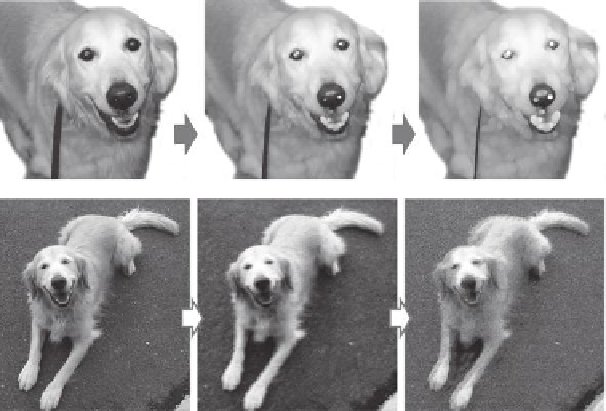Image Processing Reference
In-Depth Information
Obviously, color noise is observed in the low signal areas (darker areas) of the original
images shown in Figure 8.9a. On the other hand, color noise is seldom observed in noise-
reduced images, as shown in Figure 8.9b. However, averaging means degradation of space
or time resolution. Therefore, the applicable range has a certain limitation. Readers may
have experienced images that have low noise but no sharpness.
8.2.7
Edge Enhancement
To make an image sharper, edge enhancement is often used, which increases the contrast
along the boundary to enhance the sharpness. In this way, resolution and sharpness are
different. Resolution means how high-frequency (i.e., fine) information can be obtained
and is decided by the Nyquist frequency. Sharpness means contrast, in other words, the
level difference between white and black, and the signal amplitude, that is, the height of
t he M T F.
8.2.8
Image Format
Image data output by signal processing are stored in storage media such as memory cards
in formats such as JPEG, TIFF and raw data.
8.2.9
Problem of DSP Correction Dependence Syndrome
As mentioned above, DSP is a welcome tool that operates not only essential processing to
create image data, but also compensates for the deficiencies of performance sensors, such
as inadequate noise reduction. As DSP's performance improves, the area able to be cor-
rected enlarges.
Figure 8.10 shows examples of images processing, including normally captured pictures,
pictures processed in the style of paint daubs, and pictures processed in the style of rough
FIGURE 8.10 (See color insert)
Problem of DSP correction dependence syndrome. Where is the border between photography and computer
graphics?

